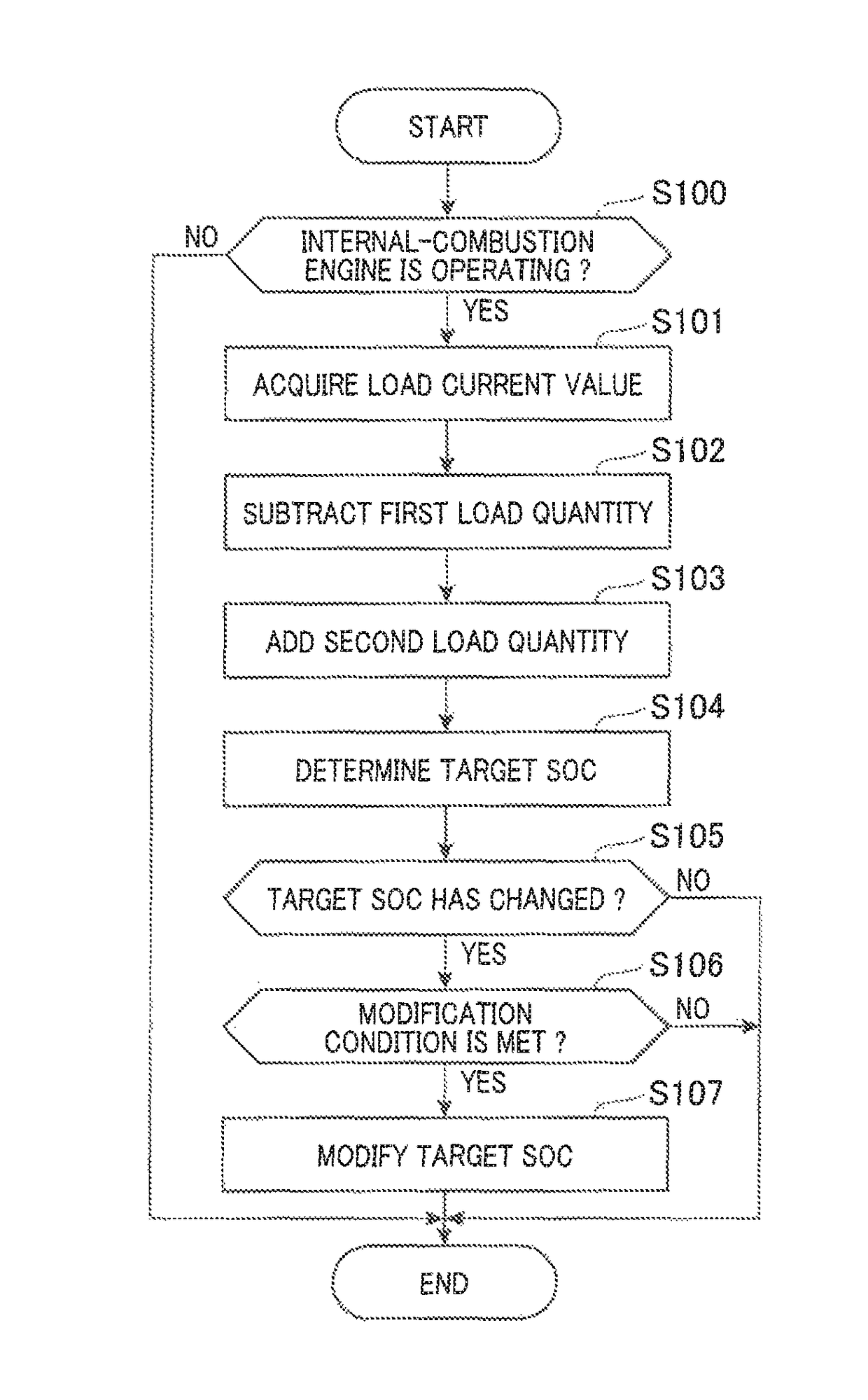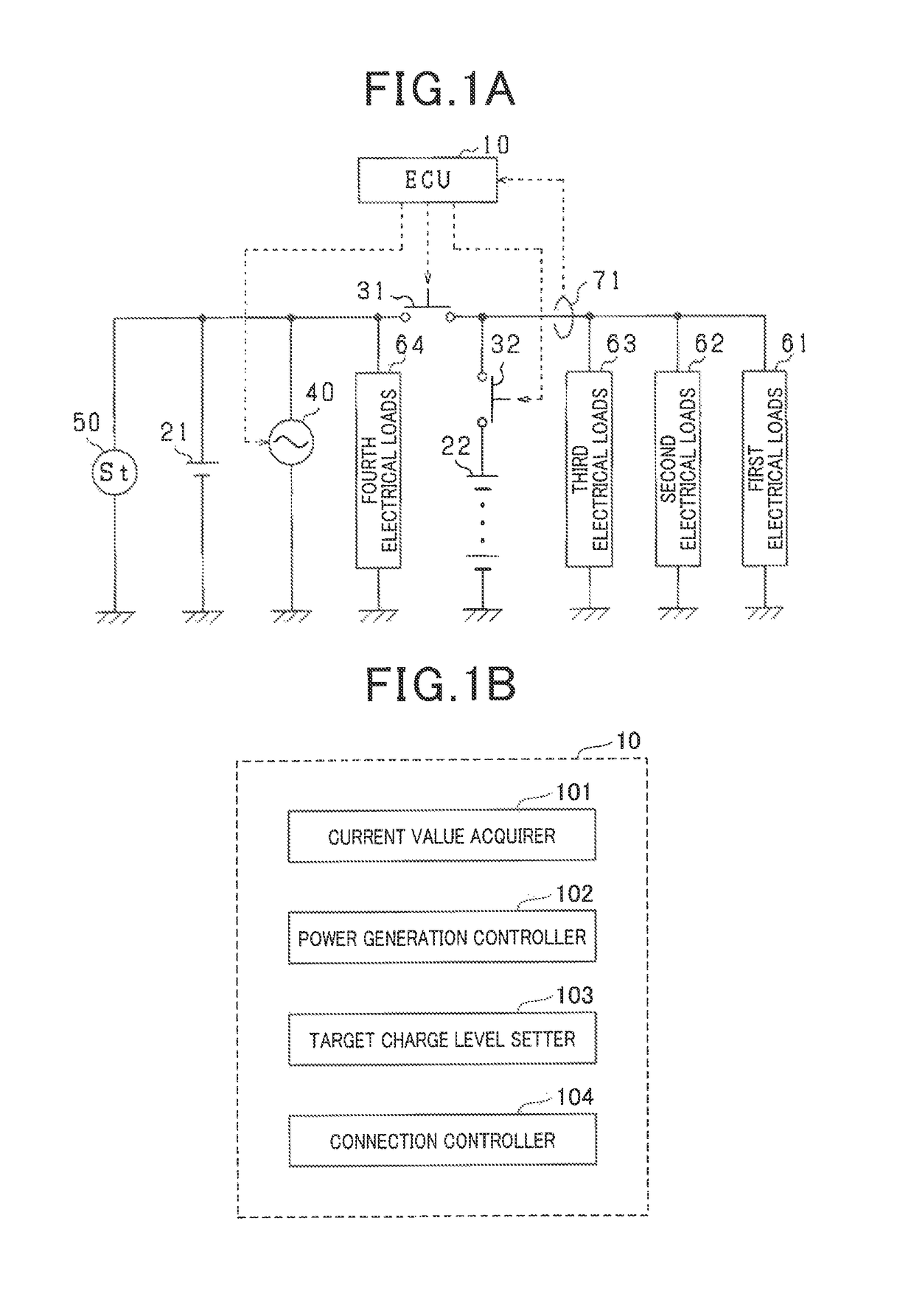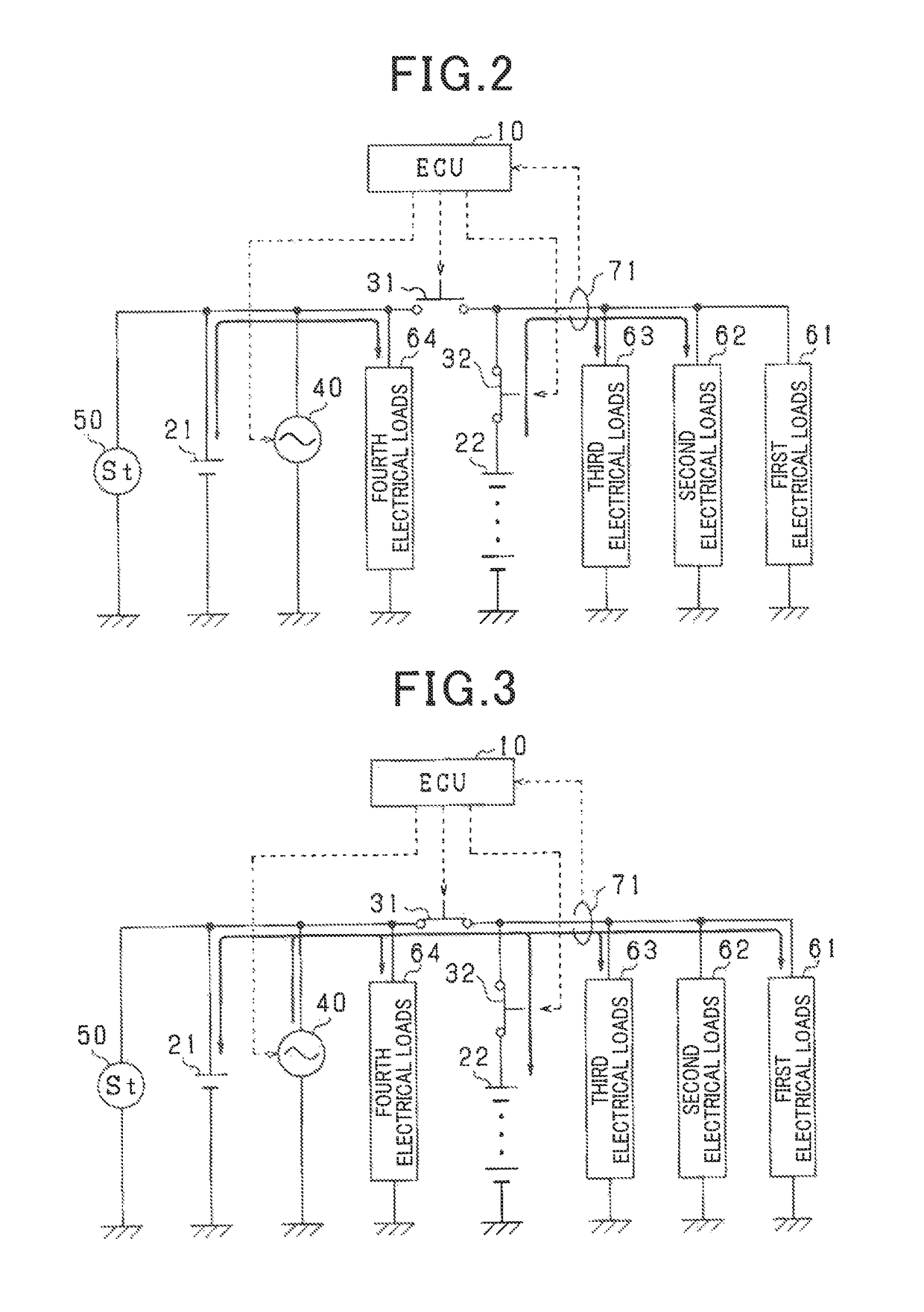Control apparatus for power supply system
a power supply system and control apparatus technology, applied in the direction of emergency power supply arrangement, electric generator control, engine starters, etc., can solve the problems of premature degradation of the first rechargeable battery, less durable for frequent charging and discharging, and increased fuel consumption of the second rechargeable battery, so as to reduce the idle capacity and improve fuel efficiency.
- Summary
- Abstract
- Description
- Claims
- Application Information
AI Technical Summary
Benefits of technology
Problems solved by technology
Method used
Image
Examples
first embodiment
[0032]A power supply system of the present embodiment may be mounted in a vehicle equipped with an internal-combustion engine as a driving power source. The vehicle has a stop and start function such that if a prescribed automatic stop condition is met, the internal-combustion engine will be automatically stopped, and if a prescribed restart condition is met, then the internal-combustion engine will be restarted. In addition, the vehicle also has a regenerative charging function to generate electrical charging power from regenerative energy.
[0033]As shown in FIG. 1, rechargeable batteries including a first rechargeable battery 21 and a second rechargeable battery 22 are mounted in the vehicle carrying the power supply system. The first rechargeable battery 21 is a well-known lead-acid battery. More specifically, the lead-acid battery is formed of a series connection of a plurality of battery cells. Each cell includes lead dioxide (PbO2) as a positive-electrode active material, lead ...
second embodiment
[0086]A second embodiment is different from the first embodiment in the modification condition for permitting the target SOC to be modified. More specifically, if the SOC of the second rechargeable battery 22 is greater than a modified target SOC, the target SOC is permitted to be modified. Therefore, in the case where the SOC exceeds the target SOC due to power regeneration or in the case where the target SOC is increased after being decreased, the modification condition that the SOC of the second rechargeable battery 22 is greater than a modified target SOC is met.
[0087]Processing of the present embodiment will now be described with reference to FIG. 11. A flowchart of the processing of the present embodiment is similar to the flowchart of FIG. 7. Therefore, it will not be described again.
[0088]At time 50, the first switch 31 is turned off and the second switch 32 is turned on because the SOC is greater than the target SOC, whereby the first to third electrical loads 61-63 are sup...
third embodiment
[0100]A third embodiment is different from the first and second embodiments in the modification condition for permitting the target SOC to be modified. More specifically, when the operation of the internal-combustion engine is stopped, the target SOC is permitted to be modified. That is, when the load current increases during operation of the internal-combustion engine, the target SOC is retained. When idling of the internal-combustion engine is stopped, the target SOC may be modified. After the internal-combustion engine is restarted, power generation is performed so that the SOC is kept at the modified SOC.
[0101]The flowchart of processing of the present embodiment (not shown) is similar to that of the first endowment as shown in FIG. 7 except that even if “No” in step S100, a value of load current is acquired. After step S100, the process flow will proceed to step S104 without performing subtraction of the first load quantity and addition of the second load quantity.
[0102]The pro...
PUM
 Login to View More
Login to View More Abstract
Description
Claims
Application Information
 Login to View More
Login to View More - R&D
- Intellectual Property
- Life Sciences
- Materials
- Tech Scout
- Unparalleled Data Quality
- Higher Quality Content
- 60% Fewer Hallucinations
Browse by: Latest US Patents, China's latest patents, Technical Efficacy Thesaurus, Application Domain, Technology Topic, Popular Technical Reports.
© 2025 PatSnap. All rights reserved.Legal|Privacy policy|Modern Slavery Act Transparency Statement|Sitemap|About US| Contact US: help@patsnap.com



